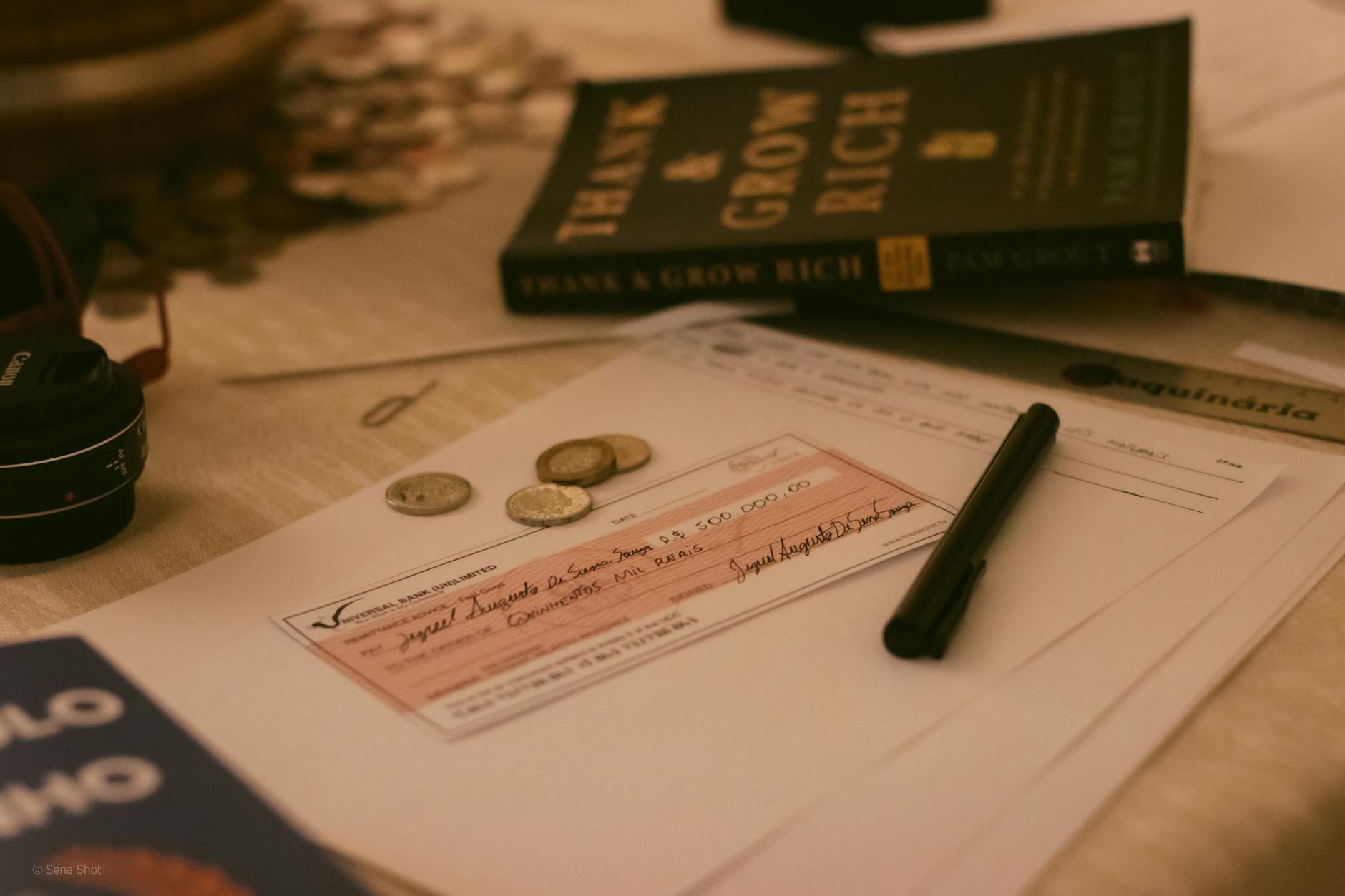Are You Supporting Green Initiatives with Your Bank in Australia?

Green Banking Innovations
Exploring eco-friendly banking isn't just about finding the best interest rates or term deposit calculator options. It's about aligning our financial choices with sustainable practices that protect our environment. As someone deeply committed to Australia's lush natural resources, like the tranquil oasis of the City Botanic Gardens, I'm convinced that banking can play a significant role in environmental conservation. One practical step is to compare bank accounts geared towards sustainability, helping you support institutions that fund green projects without extra effort.
Essentials of Green Banking Policies
Understanding green banking often starts with examining the environmental policies of different financial institutions. Many banks now offer products that reduce carbon footprints, such as joint bank account options that consolidate resources and decrease paperwork. These accounts often promote shared responsibility for eco-friendly practices within families or partnerships. As you explore these options, consider how these banks contribute to local eco-initiatives similar to the innovative eco-hubs at South Bank.
Benefits of Eco-Friendly Banking
The positives of green banking extend beyond lower carbon emissions. Choosing sustainable financial products fosters community investments in renewable energy and other environmentally-conscious projects. Moreover, it enables you to take part in broader efforts to rejuvenate areas like the Brisbane Riverwalk, a testament to the power of collective environmental responsibility. By advocating for green initiatives, you not only contribute to preserving Australia's unique ecosystems but also encourage financial institutions to adopt and expand their green offerings.
Evaluating Your Current Bank
Analyzing Environmental Practices
When analysing the environmental practices of your bank, it can be beneficial to think about the vibrant eco-focused initiatives here in Brisbane, such as the innovative eco-hubs at South Bank. These can provide inspiration on what to look for in a bank. Firstly, consider whether your bank invests in projects that support renewable energy and conservation efforts. Look for clear commitments from the financial institution towards reducing their carbon footprint and engagement with community-based environmental programs. Such commitments signal a genuine interest in a sustainable future.
Key Questions to Ask
To truly gauge your bank’s commitment to sustainability, ask the right questions. Inquire about the specific green initiatives supported by your bank. Does it offer transaction accounts that include environmental incentives? Seek clarity on their policies regarding ethical investments and whether they engage in any industry partnerships focusing on sustainability. These questions can shed light on the bank’s real contributions to sustainability beyond mere promotional talk.
Assessing Their Ethical Investments
Ethical investments are crucial for eco-conscious individuals looking to align financial practices with their values. Evaluate where your bank channeled its investments. Does it have a focus on funding eco-friendly projects or sustainable industries? If, like the City Botanic Gardens, your bank doesn’t have a visible commitment to nurturing growth and sustainability, it may be time to consider alternatives. Moreover, understand the process for how to open bank account options that prioritise green investments, ensuring your funds are directed toward environmentally sound ventures.
Transitioning to a Greener Bank
Steps to Make the Switch
Making a move to a greener bank is a straightforward process that can significantly enhance your contribution towards a sustainable future. Start by assessing your bank account needs. Consider what features are essential—be it mobile banking, local ATM availability, or simply the proximity of branches. Once you have a clear understanding of your requirements, compare these with the offerings of banks that are committed to eco-friendly policies. A visit to Brisbane's innovative eco-hubs at South Bank might inspire broader financial sustainability goals.
Finding Sustainable Banking Options
Listen to your curiosity as you explore banks with a reputation for environmental stewardship. Look for institutions that support renewable energies, offer paperless statements, and invest in sustainable projects. Review their environmental reports or green score ratings. Some banks might even align with community-oriented eco-friendly ventures, similar to initiatives seen at Brisbane Riverwalk.
Seamless Migration Tips
Transitioning doesn’t have to be a daunting task. To make the migration smooth, start by opening a joint savings account with your selected green bank. This allows you to gradually shift funds and set up automatic transfers from your old bank. Don’t forget to update your direct debits and subscriptions. Some banks offer services to assist in transferring your financial commitments, making the transition hassle-free. Whether it’s through online banking platforms or in-branch consultations, you’ll find practical guidance along the way.
Supporting Eco-Friendly Projects
Tracking Bank’s Green Investments
Understanding where your bank invests can uncover a lot about its commitment to sustainability. Many banks now offer insights into their investment portfolios, detailing how they allocate funds to eco-friendly projects. When opening a savings account or transitioning into a high yield savings account, it's prudent to inquire about these details. Such insights empower you to make informed choices that align with your values as these investments often include funding for renewable energy sources, conservation projects, and other initiatives aimed at reducing carbon footprints.
Participating in Bank’s Eco Initiatives
Participating in your bank's sustainable initiatives can be a rewarding endeavor. Many banks in Australia are actively involved in eco-friendly projects or donate a portion of their profits to environmental causes. By engaging in these programs, you contribute to a larger impact. Look for banks involved in local initiatives, similar to those at the Brisbane Riverwalk. These could be activities like tree planting drives or campaigns to reduce single-use plastics. Being involved not only supports green efforts but also fosters a sense of community and shared responsibility.
Understanding Investment Risks
While supporting eco-friendly projects through your choice of bank is admirable, it's essential to be mindful of the associated risks. Investing in green projects may come with its own set of uncertainties, much like any investment opportunity. It's crucial to assess potential risks, investment returns, and any possible fees or conditions tied to such accounts or initiatives. Opt for solutions that also cater to your financial security as you approach retirement, ensuring a balanced approach between supporting environmental causes and achieving personal financial stability.
Common Pitfalls in Green Banking
Overlooking Details
While the allure of green banking is undeniable, one must not undervalue the importance of scrutinising the fine print. This examination ensures that your bank's climate change fund aligns with genuine environmental ethics rather than superficial promises. In the same way that we cherish the native flora at the City Botanic Gardens, you should evaluate the sustainability credentials of your institution, diving into metrics that measure real impact on renewable energy projects and carbon footprint reduction. Understanding the terms and conditions helps in avoiding pitfalls that could compromise your eco-focused intentions with hidden fees or vague commitments.
Misjudging Green Credentials
As we explore eco-friendly innovations around South Bank, it's crucial to recognise that not every seemingly green bank truly supports sustainable causes. Misjudging sustainability claims is a common mistake when navigating the eco-conscious banking sphere. It’s essential to research and verify if the institution’s environmental initiatives reflect genuine efforts or if they merely serve as marketing tactics. Utilising resources like bank rankings or sustainability reports can safeguard against surface-level commitments, ensuring your banking partner is dedicated to impactful environmental change.
Overlooking Personal Needs
Finally, while supporting environmental initiatives is integral, you shouldn't ignore your own financial requirements. Balancing eco-conscious choices with personal financial priorities is akin to attending to both the enduring beauty of Brisbane Riverwalk and one's security needs. It’s vital to choose a bank that not only prioritises sustainability but also offers features and services that meet your personal expectations and financial goals. This approach ensures that your banking choices contribute positively to both the planet and your financial well-being.


